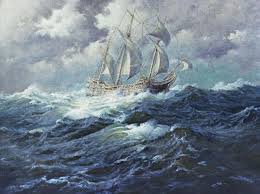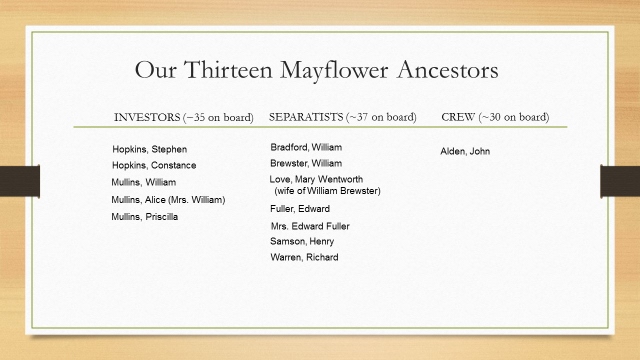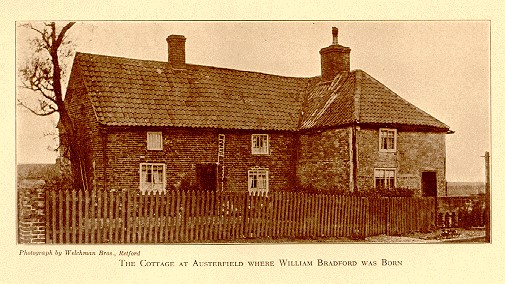Source: America’s Christian History – Level F – Learning History through Principles, J.S. Smithies
After setting sail on September 6, 1620, the Pilgrims experienced good weather and good sailing conditions for the first few days. However, The Mayflower soon became caught in forceful winds that severely shook the ship. There were times when the sailing became so difficult that the Mayflower’s master, Christopher Jones, wanted to turn around and go back to England. However, he decided that to turn back would only make conditions worse.
The turbulent seas caused some damage as the ship became leaky above the waterline, and one of the main beams supporting the deck appeared to be bowing. Fortunately, the crew had brought a big screw with them from Holland, and they were able to support the deck with it while they reinforced it with a new mast. Thankfully, this repair allowed the Pilgrims to continue on with their journey.
The intended destination was an area near the Hudson River, in the “Colony of Virginia.” However, the ship was forced far off course by inclement weather and drifted well north of the intended Virginia settlement. The settlers ultimately failed to reach Virginia, where they had already obtained permission from the Virginia Company to settle, because of difficulties navigating the treacherous waters off the southeast corner of Cape Cod. As a result of the delay, the settlers did not arrive in Cape Cod until after the onset of a harsh New England winter. Rather than chancing more days at sea, the Pilgrims decided to drop anchor.

For more on the Mayflower Compact, read:
https://www.awesomestories.com/asset/view/A-NEAR-MUTINY-Pilgrims-to-America-A-Pictorial-History
Source for the following: Constitutional Rights Foundation: http://www.crf-usa.org/foundations-of-our-constitution/mayflower-compact.html
Almost immediately, an argument broke out. According to William Bradford (who later wrote an account of the Pilgrims’ experiences) several “strangers” made “discontented and mutinous speeches.” They apparently argued that, since the Cape Cod area was outside the jurisdiction of the Virginia Company, its rules and regulations no longer applied. The troublemakers threatened to do as they pleased “for none had power to command them,” wrote William Bradford. Three thousand miles from home, a real crisis faced the colonists even before they stepped ashore.
Imagine the situation: over 100 people, cut off from any government, with a rebellion brewing. Only staunch determination would help the Pilgrims land and establish their colony. If they didn’t work as a group, they could all die in the wilderness.
The Pilgrim leaders realized that they needed a temporary government authority. Back home, such authority came from the king. Isolated as they were in America, it could only come from the people themselves. Aboard the Mayflower, by necessity, the Pilgrims and “Strangers” made a written agreement or compact among themselves.
The Mayflower Compact was probably composed by William Brewster, who had a university education, and was signed by nearly all the adult male colonists, including two of the indentured servants. The format of the Mayflower Compact is very similar to the written agreements used by the Pilgrims to establish their Separatist churches in England and Holland. Under these agreements the male adult members of each church decided how to worship God. They also elected their own ministers and other church officers. This pattern of church self-government served as a model for political self-government in the Mayflower Compact.
The colonists had no intention of declaring their independence from England when they signed the Mayflower Compact. In the opening line of the Compact, both Pilgrims and “Strangers” refer to themselves as “loyal subjects” of King James. The rest of the Mayflower Compact is very short. It simply bound the signers into a “Civil Body Politic” for the purpose of passing “just and equal Laws . . . for the general good of the Colony.” But those few words expressed the idea of self-government for the first time in the New World.
Immediately after agreeing to the Mayflower Compact, the signers elected John Carver (one of the Pilgrim leaders) as governor of their colony. They called it Plymouth Plantation.
TROUBLEMAKERS on the MAYFLOWER
One of the people who was “rocking the boat” was almost certainly John Billington. In March 1621, John Billington was brought before the Company and charged with “contempt of the Captain’s lawful command with opprobrious speeches,” and was sentenced to have his neck and heels tied together: “but upon humbling himself and craving pardon, and it being the first offence, he is forgiven.” Previously, on December 5, 1620, still onboard the Mayflower, John’s young son, Francis Billington, got a hold of his father’s musket and shot it off inside, showering sparks around an open barrel of gunpowder and nearly snuffing out this crucial part of our history. http://mayflowerhistory.com/billington-john/
Another troublemaker may have been Stephen Hopkins’ indentured servant, Edward Doty. Doty was known for his hot temper and fraudulent business dealings. On June 18, 1621 the first duel was fought in New England between two servants of Stephen Hopkins, Edward Doty and Edward Leister. The duel ended with one being wounded in the hand and one in the thigh. Their punishment was to be tied head and feet together for twenty-four hours without meat or drink. But soon their master Stephen Hopkins, apparently taking pity on their “great pains”, made a “humble request, upon promise of a better carriage” and they were released by the governor.[2][3]
- https://en.wikipedia.org/wiki/Edward_Doty
- Caleb H. Johnson, The Mayflower and her passengers (Indiana: Xlibris Corp., 2006), pp. 132–133
- Eugene Aubrey Stratton. Plymouth Colony: Its History and People, 1620–1691 (Salt Lake City: Ancestry Publishing, 1986), pp. 283–284
Later, Doty was frequently in the Plymouth Court, both as a defendant and as a plaintiff in both civil and criminal cases, often accused of trespassing, assault and battery, and breaking the peace.
Stephen Hopkins himself was hotheaded and had been previously sentenced to death but spared for his part in a mutinous plot while shipwrecked on Bermuda. In Plymouth, he was involved in various scandals usually involving alcohol.
In the spring, the Pilgrims built huts ashore, and on March 21/31, 1621, the remaining surviving passengers disembarked from the Mayflower. On April 5/15, 1621, the Mayflower set sail from Plymouth to return to England, where she arrived on May 6/16, 1621.
Thirteen of the passengers on board were our ancestors:
- William Bradford – Separatist
- William Mullins – investor
- Alice (wife of Wm Mullins) – investor
- Priscilla Mullins, daughter of the two above – investor
- William Brewster – Separatist
- Mary (wife of Wm Brewster) – Separatist
- Richard Warren – investor
- Edward Fuller – Separatist
- Fuller (his wife) – Separatist
- John Alden – hired cooper
- Stephen Hopkins – Stranger
- Constance Hopkins – journeyed with her father and stepmother, Stephen and Elizabeth Hopkins, her brother Giles and her half-sister Damaris; her half-brother, Oceanus, who was born during the voyage.
- Henry Samson – Separatist, child traveling with the Tilley’s

William Bradford came on the Mayflower with his wife Dorothy (May), leaving son John behind in Holland. Dorothy fell off the Mayflower and drowned on 7 December 1620, when it was anchored in Provincetown Harbor.
During the winter the passengers suffered an outbreak of a contagious disease described as a mixture of scurvy, pneumonia and tuberculosis. When it ended, there were only 53 passengers, just over half, still alive. Half of the crew died as well.
Our ancestors, William and Alice Mullins, along with Edward Fuller and his wife, were among those who died on board during the winter of 1620-21.



